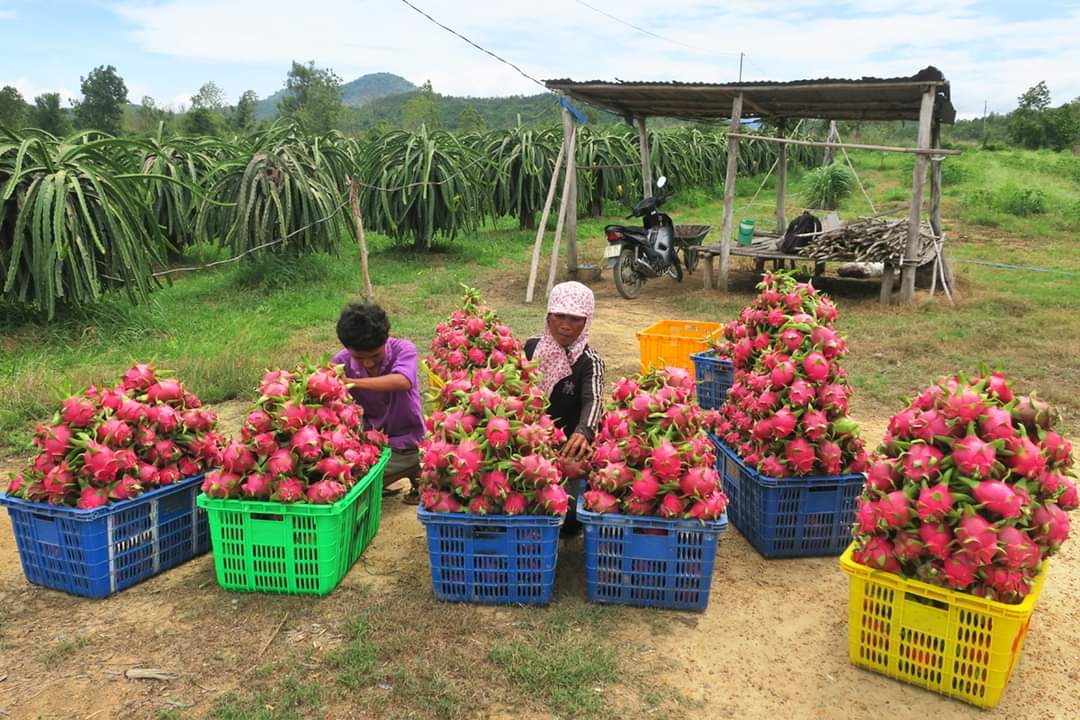Fruit farming in India has experienced remarkable growth and diversification in recent years. With advancements in agricultural practices, technological innovations, and government support, the fruit farming sector has become a significant contributor to the nation's economy. In 2024, fruit farming encompasses a variety of fruits, each cultivated with specific techniques suited to India's diverse climatic conditions. This article delves into the nuances of banana, dragon fruit, tomato, strawberry, and grape farming, while also providing an overview of the types of farming prevalent in India.
Types of Farming in India
India's farming landscape is diverse and includes several types of farming practices, each suited to different regions, climates, and crops. The main types of farming in India include:
1. Subsistence Farming: Small-scale farming primarily for the farmer's family consumption.
2. Commercial Farming: Large-scale farming aimed at generating profit through the sale of crops.
3. Plantation Farming: Cultivation of a single crop on a large scale, often for export (e.g., tea, coffee).
4. Mixed Farming: Integration of crop cultivation and livestock rearing.
5. Organic Farming: Farming without synthetic chemicals, emphasizing natural processes and biodiversity.
6. Horticulture: Cultivation of fruits, vegetables, and ornamental plants.
7. Dryland Farming: Farming in arid areas with minimal irrigation.
8. Shifting Cultivation: Temporary farming on cleared land, which is later abandoned and allowed to regenerate.
Banana Farming
Bananas are a staple fruit in India, with the country being one of the largest producers globally. The states of Tamil Nadu, Maharashtra, Karnataka, and Gujarat are major banana producers. In 2024, banana farming in India has seen significant improvements through the adoption of tissue culture techniques, which ensure disease-free and high-yield plants. Farmers now employ drip irrigation systems and integrated pest management (IPM) practices to optimize water usage and minimize chemical inputs.
The Grand Naine variety remains popular due to its high yield and market demand. Additionally, organic banana farming is gaining traction, driven by consumer preference for chemical-free produce. Farmers are also benefiting from government schemes such as the National Horticulture Mission, which provides financial and technical support.
Dragon Fruit Farming
Dragon fruit, also known as pitaya, has emerged as a lucrative crop in India. Initially introduced as an exotic fruit, it has gained popularity due to its nutritional benefits and high market value. States like Maharashtra, Gujarat, and Karnataka have become pioneers in dragon fruit farming. The crop is well-suited to India's arid and semi-arid regions, requiring minimal water and thriving in well-drained soil.
In 2024, farmers are increasingly adopting vertical farming techniques to maximize space and yield. Organic farming practices are prevalent, as dragon fruit is naturally resistant to many pests and diseases. The government supports dragon fruit farming through subsidies and training programs, encouraging farmers to diversify and enhance their income.
Tomato Farming
Tomatoes are an essential component of Indian cuisine, leading to widespread cultivation across the country. Major tomato-producing states include Andhra Pradesh, Karnataka, and Maharashtra. The adoption of greenhouse farming and hydroponics has revolutionized tomato farming in 2024, enabling year-round production and higher yields.
Hybrid tomato varieties, developed for disease resistance and longer shelf life, are commonly grown. Farmers utilize drip irrigation and mulching to conserve water and maintain soil health. Integrated nutrient management (INM) practices ensure balanced fertilization, promoting sustainable farming. The government's Pradhan Mantri Krishi Sinchai Yojana (PMKSY) scheme provides support for irrigation infrastructure, benefiting tomato farmers significantly.
Strawberry Farming
Strawberry farming, once limited to cooler regions like Himachal Pradesh and Jammu & Kashmir, is now expanding to other parts of India through advanced cultivation techniques. In 2024, polyhouse farming has enabled strawberry cultivation in non-traditional areas like Maharashtra and Karnataka, ensuring controlled environments and extended growing seasons.
The introduction of high-yielding and disease-resistant strawberry varieties has boosted production. Farmers are increasingly using organic mulches and biofertilizers to enhance soil fertility and reduce chemical usage. Agritourism is also gaining popularity, with strawberry farms attracting visitors for pick-your-own experiences, providing an additional income stream for farmers.
Grapes Farming
Grape farming in India has a rich history, with states like Maharashtra, Karnataka, and Tamil Nadu being prominent producers. The industry is divided into table grapes, wine grapes, and raisin production. In 2024, vineyard management has seen considerable advancements with the adoption of trellis systems, precision farming, and climate-controlled storage facilities.
Wine production is a growing sector, with Indian wines gaining recognition both domestically and internationally. Farmers are investing in modern winemaking techniques and collaborating with enologists to improve wine quality. The National Horticulture Board (NHB) provides financial assistance for setting up vineyards and processing units, fostering the growth of the grape farming industry.
Challenges and Opportunities
While fruit farming in India is on a promising trajectory, several challenges persist. Climate change poses a significant threat, with unpredictable weather patterns affecting crop yields. Water scarcity and soil degradation are also critical issues that need addressing through sustainable practices and efficient resource management.
On the other hand, the growing demand for organic and exotic fruits presents vast opportunities for farmers. Export potential is increasing, with Indian fruits gaining popularity in international markets. The government's focus on agri-tech and digital platforms is enhancing farmers' access to market information, inputs, and financial services, further empowering the sector.
Conclusion
Fruit farming in India in 2024 is characterized by innovation, diversification, and resilience. The cultivation of bananas, dragon fruit, tomatoes, strawberries, and grapes showcases the adaptability of Indian farmers and the potential of the agricultural sector. With continued support from the government, adoption of sustainable practices, and advancements in technology, fruit farming in India is poised for sustained growth, contributing significantly to the nation's economy and food security.





Comments